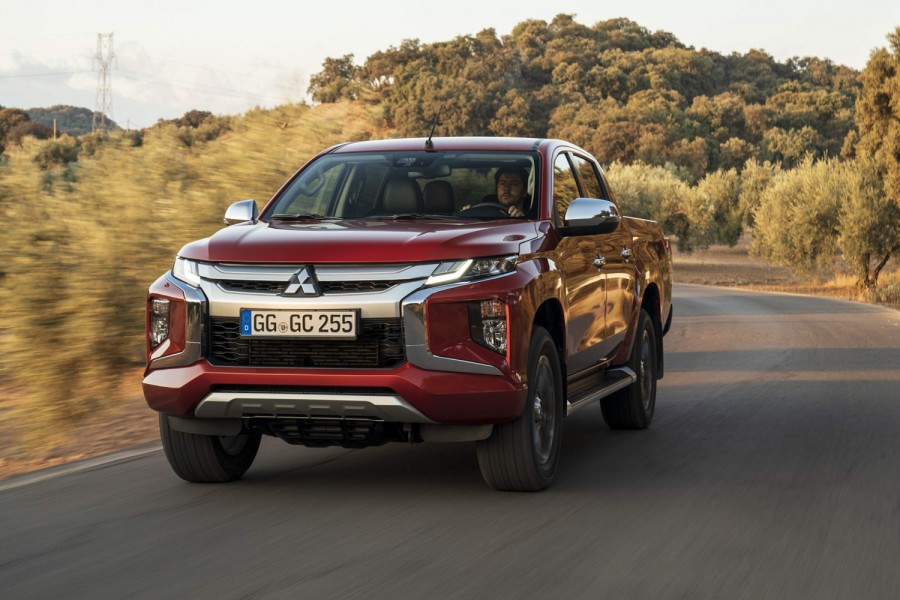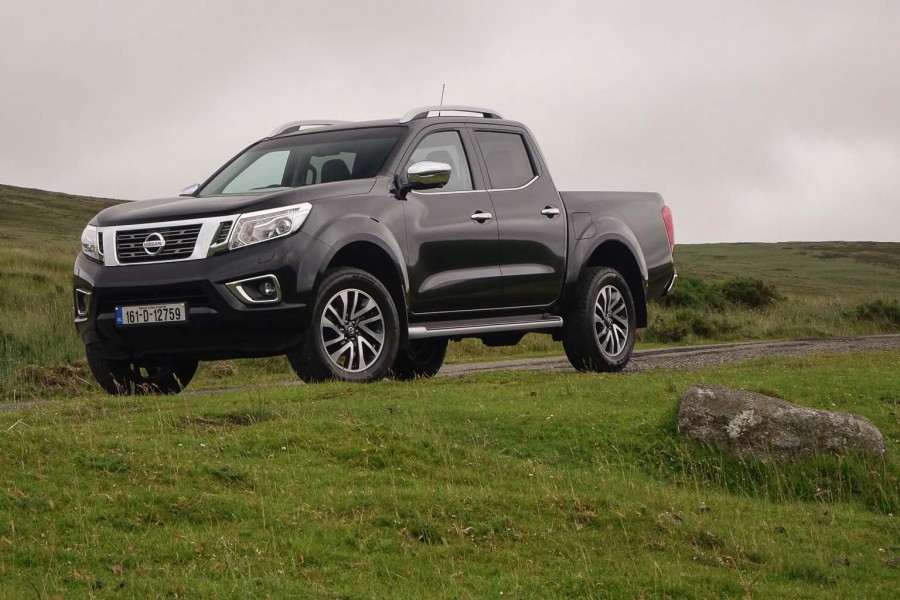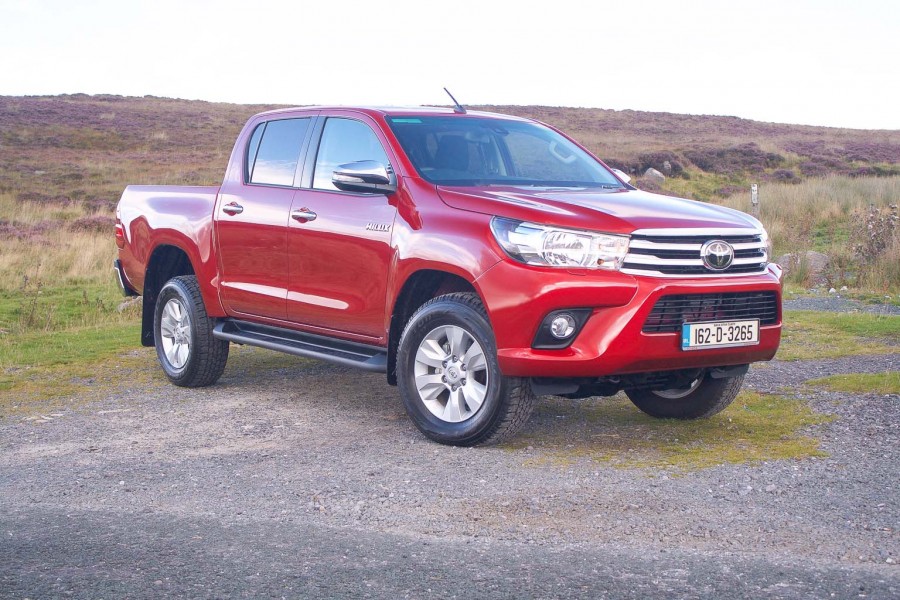The pickup sector may only account for a small percentage of the total European market, but it's an important one for the players involved. Mitsubishi has been making one-ton pickups for 41 years, and now it introduces its sixth-generation L200.
In the metal
You stand little chance of mistaking this new Mitsubishi L200 for any other pickup on the market. That's mostly down to the distinctive front-end styling that gives it a more purposeful, in-your-face look. The height of the bonnet has increased by 40mm and along the flanks Mitsubishi now fits wider side steps. All versions come with alloy wheels, ranging in size from 16- to 18 inches, and the latter also bring larger diameter brakes.
It's fair to say that there isn't a massive amount of change inside the L200, but owners of the previous L200 will spot a few improvements. For starters, the front seats get more side bolstering for lateral support and the seat base is a little longer to provide more leg support. On top-spec 'Instyle' versions the front seats are heated, and the driver's position is electrically adjustable. The steering wheel sports a new four-spoke design with multifunction controls that are easy to use, as well. A revamp of the centre console layout brings a more modern design, though the colour touchscreen doesn't have quite the same quality as what's available elsewhere in the segment.
On the practical front, the load bay remains unchanged from the previous L200. It measures 1,520mm in length and is 1,470mm wide, putting it on par with most of its rivals, such as the Ford Ranger and Nissan Navara. Mitsubishi is also introducing four new colours to its L200: Graphite Grey, Sunflare Orange, Red Solid and White Diamond. The latter uses a similar five-layer, double-baked paint technique as the Eclipse Cross, giving it a distinctive colour that is a blend between grey and white depending on the light it is seen in.
Driving it
Under the bonnet of the L200 is a new 2.3-litre turbocharged four-cylinder diesel engine. It produces a modest 150hp and has a generous spread of torque peaking at 400Nm. It's distantly related to the diesel engine that previously powered the Outlander, though it has undergone several internal changes. It is designed to meet the latest 'Euro6d temp' emission regulations and so is also equipped with an SCR exhaust gas purification system with AdBlue injection. To make life a touch easier for users, it features a decent 21-litre AdBlue tank, fillable through a separate flap next to the fuel filler cap.
The performance of the engine with its output of 150hp is marginally down on power in comparison to its predecessor (in Normal Power guise), although the peak torque figure has increased by 20Nm. There isn't a high-power version of this engine, which isn't great news for those who frequently carry heavier loads. At speed the engine provides greater refinement than before, a result of its new design and an increase in the amount of sound insulating materials in the cabin.
With the six-speed manual you do, occasionally, need to drop back to fifth gear on motorway inclines. The new six-speed automatic transmission does a better job of masking this, and its operation is quite good for the most part. You can change gears manually via the paddles behind the wheel, though the gearbox tends to react reasonably quickly in auto mode when you apply more throttle. If your budget can stretch to the auto, it's worth it.
You wouldn't exactly describe the Mitsubishi L200 as sharp to drive; however, it is a civilised thing. Steering requires a little more effort at slower speeds, but it's relatively light and responsive as the pace picks up. It's a shame there's a limited amount of adjustability on offer concerning rake and reach of the steering wheel itself. You can sense the increased rigidity and suspension improvements, and the L200 also apparently has the tightest turning circle in the segment, at 5.9 metres.
For many, this vehicle is a tool for working with, and in that respect, it gets the job done. The proven all-wheel-drive transmission enables the L200 to traverse some very tricky conditions and fitting all-terrain tyres can further add to its ability. It gets a selectable four-wheel-drive system as standard with high- and low-range gearing along with a centre locking differential. Drivers can switch between two- and four-wheel drive on the move at speeds up to 100km/h.
Venture well away from the beaten track and the L200 inspires confidence in its ability to tackle challenging terrain - even with its standard road tyres fitted. Approach and departure angles of 30- and 22 degrees respectively, and a break-over angle of 24 degrees should mean there's little chance of the underbody scraping. You can lose sight of the track ahead on steeper inclines, though, partly due to the now taller bonnet. Activating the front-facing camera at slow speeds does help, but both the camera and the screen aren't as high definition or bright as other systems out there. An overhead 360-degree view is part of the system, too, which is useful when parking.
Back on the road, there is a wider array of driver assistance systems that keep the L200 up to scratch on the safety front. These include a forward collision warning with automatic emergency braking, lane departure warning and lane change assist. Hill-start assist helps when pulling away and a rear cross-traffic alert is useful when reversing out from a parking space.
What you get for your money
Irish buyers will have the choice of three specification grades in the L200, all of which see the equipment levels rise over the previous model. The starting point of the range is the L200 Business, which costs €35,000, which includes 16-inch alloy wheels and air conditioning, with electric windows and door mirrors also included. This version gets the Easy Select 4WD manual transmission with a rear differential lock.
The mid-grade model is the L200 'Intense', which is the only version that offers the choice of either manual or automatic gearboxes, priced at €37,850 and €39,350, respectively. The Super Select 4WD II transmission includes a dedicated Off-Road Mode and Hill Descent Control. For the top-tier 'Instyle' version, Mitsubishi adds leather upholstery and heating for the front seats. The driver's seat is also electrically adjustable. There are more driver assistance features such as front and rear parking sensors, rear cross-traffic alert, Automatic High Beam function, Ultrasonic Misacceleration Mitigation System and Blind Spot Warning with Lane Change Assist function.
Summary
Clearly, Mitsubishi has been paying attention to its customer feedback. Updates and revisions to this sixth-generation Mitsubishi L200 help make it a decent package that has greater visual appeal. The lack of a higher power version does leave it wanting in some situations, but with greater refinement and better ride quality than before, the L200 takes a positive step forward in what it offers.














































